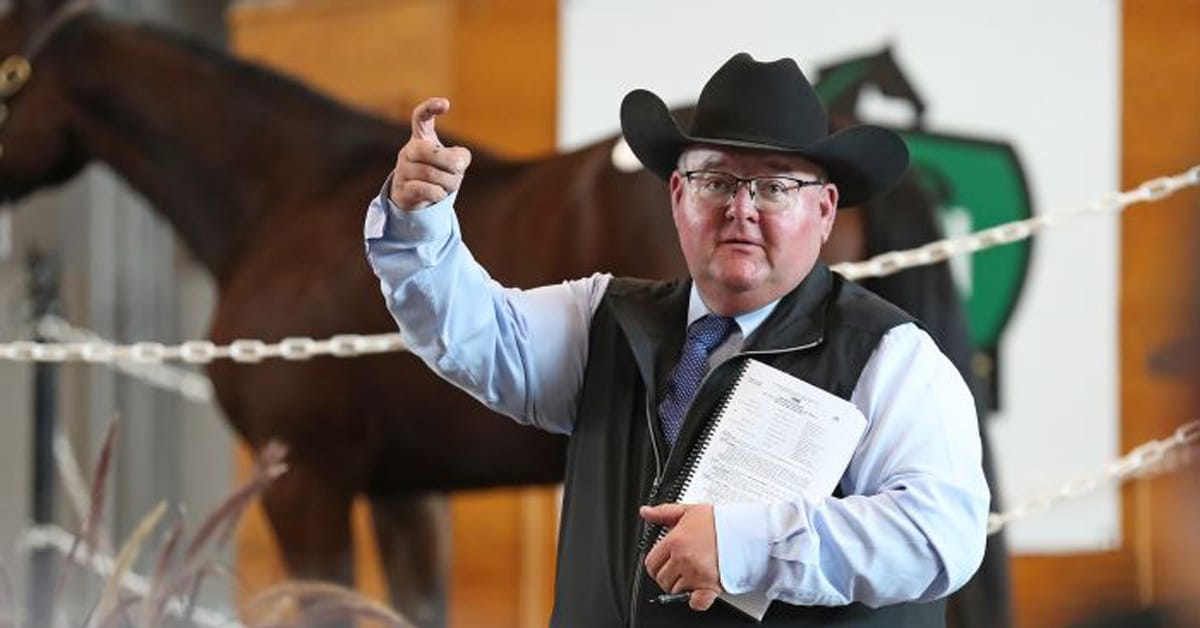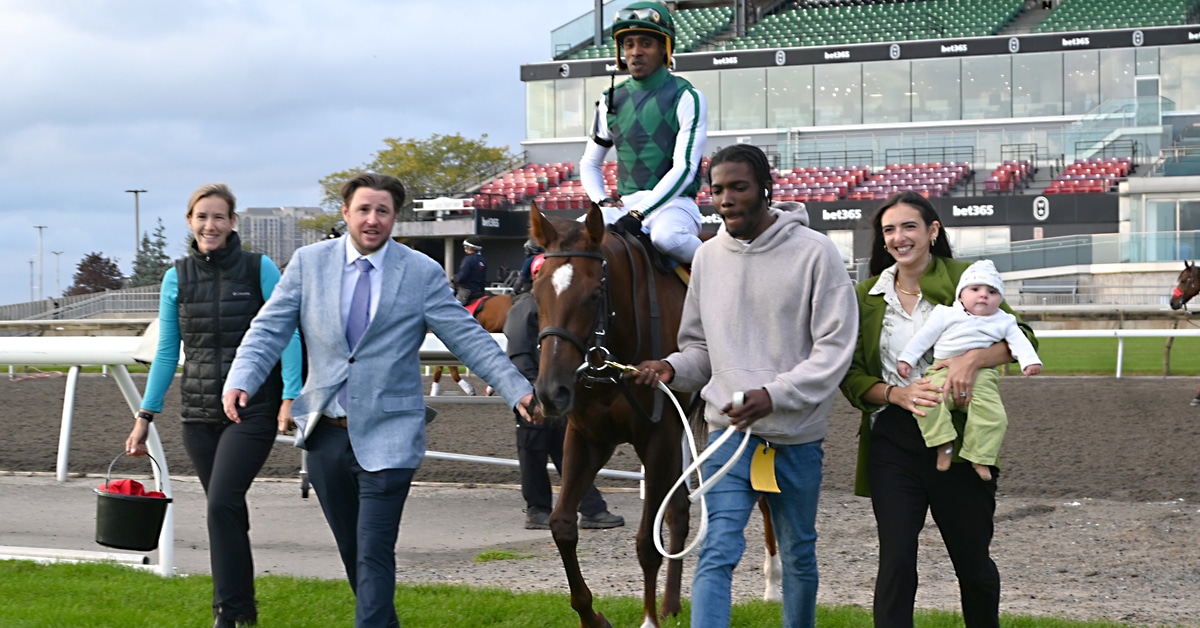“They’re all so freakin’ different.”
That’s BC’s Hastings Racecourse trainer Steve Henson on the vast range of racehorse temperaments he’s seen over the years.
Just like humans, some horses’ “personalities” veer further from centre than others. On one side are the introverts – tentative individuals who prefer solitary pursuits and get rattled in company. On the other extreme we find the extroverts who are excitable and tend to drain the energy from those around them. And that’s okay; there’s room for all types, except that in the world of racing, an overload of a specific trait can be detrimental to performance.
A vastly high-strung racehorse can’t concentrate on his job. “They just want to tear into it and just run as fast as they can,” says Henson. A tentative, fearful horse won’t be able to focus either. “The timid ones, they don’t really want to get into it,” he adds.
The good news? With a little tailored training there are ways to curb the overly-aggressive racehorse and nurture the timid one to bring out the best in each.
Calming The Aggressive Horse
Woodbine-based trainer Gail Cox says a good racehorse should be aggressive and “very, very confident” — but not crazy. Otherwise, they will expend all their nervous energy before the race dancing and sweating before they even get to the starting gate.
“They have to be able to channel their energy,” she says. “It’s really important for racehorses to have a mind to go with their ability.”
Mornings are about conditioning and fitness, not about going as fast as they want. Prior to a training session, Cox’s horses are taught to simply stand, take a deep breath, relax and look at their surroundings. “It’s a time for young horses to learn exactly what they’re supposed to do. They don’t just get on the track and bolt off right away and go once around.” She finds a pony horse a great calming influence and companionship for a nervous horse, as are long, relaxed gallops. If a horse is really fractious, she might choose to breeze it by itself for a while instead of with company.
Other horses must be introduced into the mix eventually though. “Often we breeze a horse or gallop behind another horse, so they learn to just drop the bit and settle there in behind. And then when they swing out and have clear sailing, they can go on. But in a race, if they were crazed from the start — sometimes there’s horses in front of them and they have to settle back — they can’t run through it. It’s not just about going as fast as they possibly can at all times.”
Cox also likes to train older horses in different locations at Woodbine, such as the open field and sand ring, which she says are a more relaxed atmosphere than the busy main track. She uses her own round pen for short periods of safe turnout and likes horses to be hand-grazed whenever possible for relaxation. “They need to like what they do,” she stresses.
Cox also spends a lot of time working with horses on being quiet in the starting gate. “It’s really important to get horses settled and relaxed because it seems the hyper ones don’t break well from the gate.” The horses are consecutively walked, jogged and cantered out of the gate stall before being asked to break at speed. After a workout, they come back to the gate to stand quietly and and back out, “so they don’t think every time they go in there it’s a huge deal.”
In terms of tack, regardless of what goes in their mouth, Cox says, racehorses pull hard. If control is a problem, bits are usually the first change-up. Like most trainers, Henson starts his horses off in a snaffle D-bit and switches to a ring bit for a little more purchase. From there, a mammoth range of bitting options exist.
Blinkers are one of the most-used items in a trainer’s toolbox to get a less-than-focused horse to concentrate on the task at hand, as they restrict the field of vision to help direct the animal’s attention to what’s happening in front of them. They can perform the same function for more reticent racehorses as well.

A quiet pony is essential to calming a volatile horse, or giving confidence to a timid animal. (Cara Grimshaw photo)
Nurturing the Timid Horse
It’s more often the case that racehorses need settling than they do hyping up, as generations of selective breeding have made them naturally competitive, athletic animals. Regardless, they can sometimes be intimidated by their job.
Surprisingly, horses that arrive at the track on the timid side are often colts. Their main fear? Other horses. On the farm, yearlings generally are turned out with other horses, but when colts start to play a little too hard with one another, they’re separated. By the time they reach the track as two-year-olds, they haven’t been socialized as much as fillies.
The key is to work them in company every day right from the start, suggest both Cox and Henson.
“You try to get them comfortable and confident in the middle, the outside or behind,” says Cox, “Eventually the horse will have to go on their own but to start with, you’d like everything to go the right way, rather than upsetting them.”
Henson also suggests putting a timid horse in a position where they’re going to ‘win’ a work or a gallop with their head in front to get their confidence built up. The right exercise rider partnered with the right horse, no matter what the animal’s temperament, can make all the difference. “They’re on the horses all the time. They know what to do – how to gear them down or get them going.”
And, once more, the pony horse’s role can’t be underestimated in helping the apprehensive youngster find his footing in this strange new environment.
Role of Feed, Supplements and Medications
While Cox and Henson don’t use them a lot, they say many trainers give their horses one or more calming supplements available on the market. Some of the more commonly recognized ingredients include tryptopan, magnesium and Thiamine/Vitamin B1.
Cox says the tranquilizer acepromazine (ACE), given orally, can be a useful training aid on occasion: “If horses have had a number of days off, or it’s an awful muddy track, or it’s a really busy track and you just don’t want them to do too much.” She warns that you don’t want to use ACE all the time as there is a withdrawal period and horses can’t race on it. She notes, “and at some point, they have to be training without it.”
As for feeding, Cox and Henson both say they don’t tailor programs too much for either their aggressive or timid horses, except gearing down a bit on the high-energy grains like oats and sweet feed for those horses that are really edgy.
Besides that, Henson says he “feeds ‘em normal” and “tries to outsmart them.” Similarly, Cox likes to get into the mind of each horse that comes through her barn. “They’re definitely individuals and you want to bring out the best you can in them.”
The Latest










